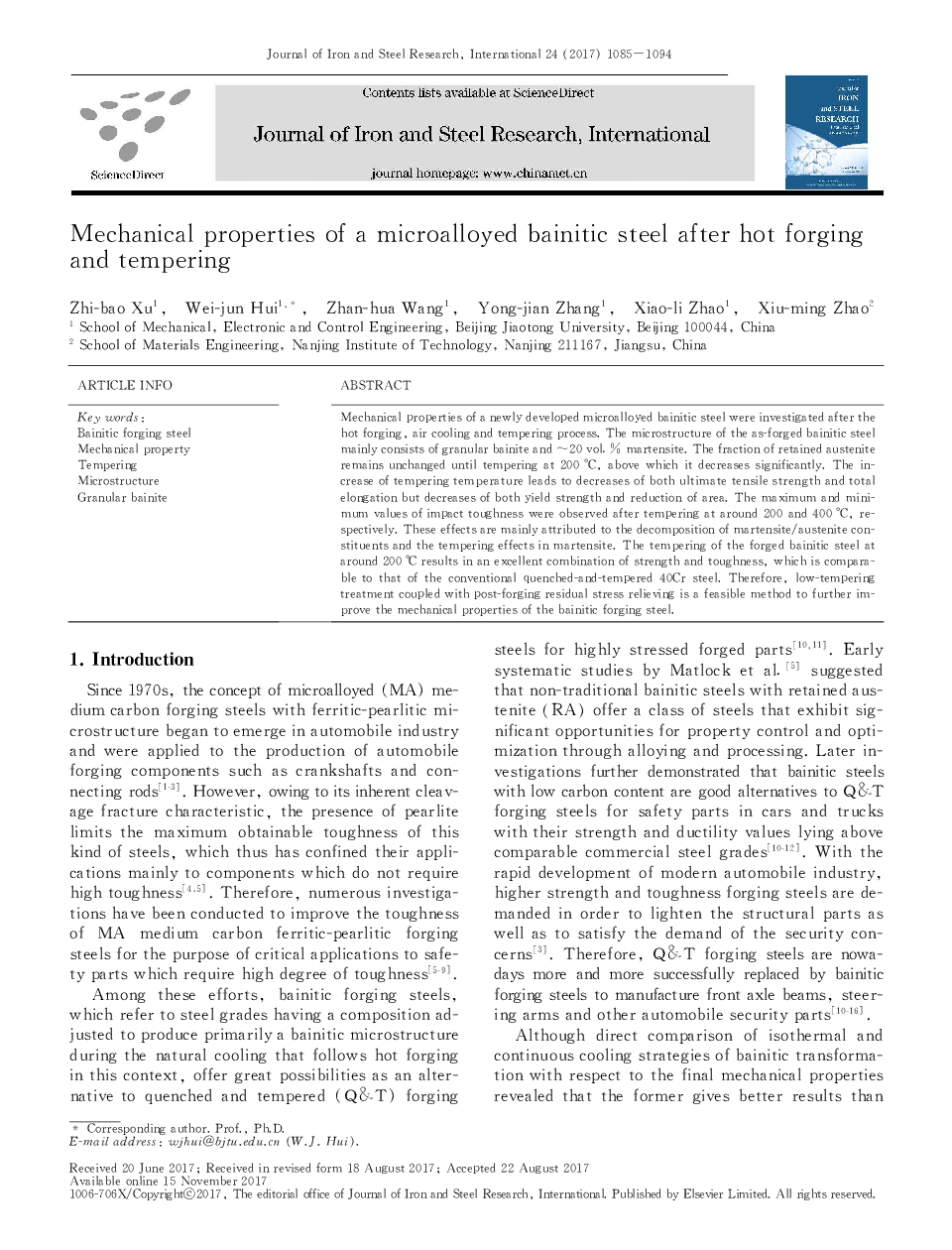| Article ID | Journal | Published Year | Pages | File Type |
|---|---|---|---|---|
| 8004142 | Journal of Iron and Steel Research, International | 2017 | 10 Pages |
Abstract
Mechanical properties of a newly developed microalloyed bainitic steel were investigated after the hot forging, air cooling and tempering process. The microstructure of the as-forged bainitic steel mainly consists of granular bainite and â¼20 vol. % martensite. The fraction of retained austenite remains unchanged until tempering at 200 °C, above which it decreases significantly. The increase of tempering temperature leads to decreases of both ultimate tensile strength and total elongation but decreases of both yield strength and reduction of area. The maximum and minimum values of impact toughness were observed after tempering at around 200 and 400 °C, respectively. These effects are mainly attributed to the decomposition of martensite/austenite constituents and the tempering effects in martensite. The tempering of the forged bainitic steel at around 200 °C results in an excellent combination of strength and toughness, which is comparable to that of the conventional quenched-and-tempered 40Cr steel. Therefore, low-tempering treatment coupled with post-forging residual stress relieving is a feasible method to further improve the mechanical properties of the bainitic forging steel.
Related Topics
Physical Sciences and Engineering
Materials Science
Metals and Alloys
Authors
Zhi-bao Xu, Wei-jun Hui, Zhan-hua Wang, Yong-jian Zhang, Xiao-ii Zhao, Xiu-ming Zhao,
